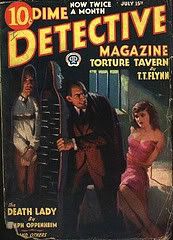
Author: Susan Hill
Publisher: Vintage
Publishing Date: 2007
ISBN: 9780099511649
It’s the late twentieth century, on a foggy English evening. In front of you stands a lonely manor house with a dilapidated graveyard and you are required to stay here, alone, to sort through the belongings of the recently deceased owner. Would you stay or turn and go straight back to where you come from. Susan Hill’s The Woman in Black is the story of what happened to young solicitor, Arthur Kipps, when he found himself in this situation.
The Woman in Black opens on Christmas Eve with the Kipps family sitting around the fire telling ghost stories. At this moment, the father, Arthur Kipps, appears quite shaken and abruptly leaves the room – unable to share a dark secret that has haunted him since he was a young man.
"They had chided me for being a spoilsport, tried to encourage me to tell them the one ghost story I must surely, like any other man, have it in me to tell. And they were right. Yes, I had a story, a true story, a story of haunting and evil, fear and confusion, horror and tragedy. But it was not a story to be told for casual entertainment, around the fireside on Christmas Eve."
This experience with his family results in Arthur Kipps reflecting back to his time as a young solicitor when he was sent to attend to the affairs of a recently deceased client, Mrs Drablow. On the instructions of his employer, Arthur travels to Eel Marsh House, the isolated and abandoned estate of Mrs Drablow. However, rumours about this estate are rampant and when he first arrives at the mansion, young Arthur is struck by its hauntingly beautiful appearance.
“I looked up ahead, and saw, as if rising out of the water itself, a tall, gaunt house of grey stone and with a slate roof, that now gleamed steely in the light. It stood like some lighthouse or beacon or martello tower, facing the whole, wide expanse of the marsh and estuary, the most astonishingly situated house I had ever seen or could conceivably have imagined.”
Arthur settles himself in the mansion, but he is not there for long when he begins to hear strange noises and sees visions of a pale, haggard woman dressed in black. After speaking with locals Arthur begins to piece together the tragic history of this English manor and those who once lived there. Arthur is intrigued at first by the strange happenings at Eel House, but eventually he becomes deathly ill and returns to London. However, this is by far the end, as Eel house and the mysterious ‘woman in black’ are not finished with Arthur Kipps.
In The Woman in Black, Susan Hill succeeds in presenting the reader with a classic Victorian ghost story. It is smoothly paced and contains all the ingredients of the genre – a mystery to solve, a lonely manor house and an isolated, foggy location. I would not describe The Woman in Black as ‘terrifying’, however, it is a good, old fashioned ghost story with enough plot twists to keep the reader interested. A good choice for a cold, wintery night.










